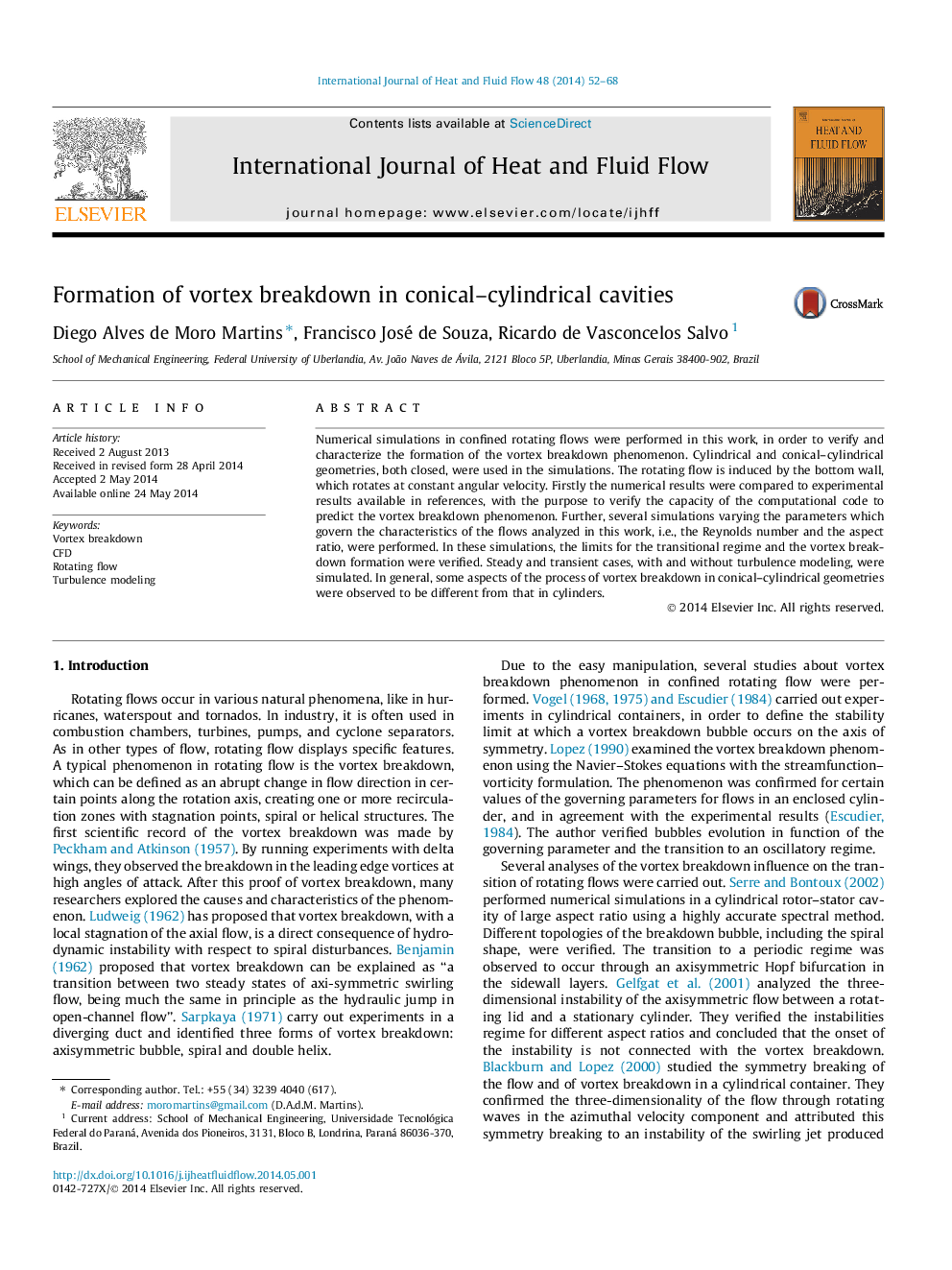| Article ID | Journal | Published Year | Pages | File Type |
|---|---|---|---|---|
| 655336 | International Journal of Heat and Fluid Flow | 2014 | 17 Pages |
Abstract
Numerical simulations in confined rotating flows were performed in this work, in order to verify and characterize the formation of the vortex breakdown phenomenon. Cylindrical and conical-cylindrical geometries, both closed, were used in the simulations. The rotating flow is induced by the bottom wall, which rotates at constant angular velocity. Firstly the numerical results were compared to experimental results available in references, with the purpose to verify the capacity of the computational code to predict the vortex breakdown phenomenon. Further, several simulations varying the parameters which govern the characteristics of the flows analyzed in this work, i.e., the Reynolds number and the aspect ratio, were performed. In these simulations, the limits for the transitional regime and the vortex breakdown formation were verified. Steady and transient cases, with and without turbulence modeling, were simulated. In general, some aspects of the process of vortex breakdown in conical-cylindrical geometries were observed to be different from that in cylinders.
Related Topics
Physical Sciences and Engineering
Chemical Engineering
Fluid Flow and Transfer Processes
Authors
Diego Alves de Moro Martins, Francisco José de Souza, Ricardo de Vasconcelos Salvo,
